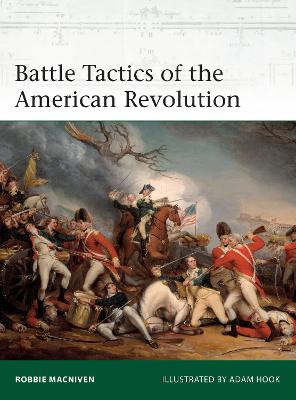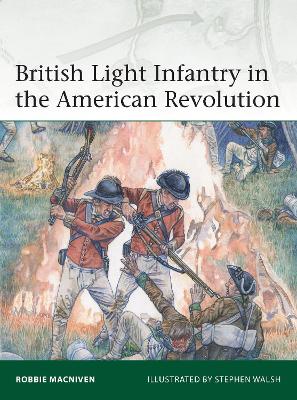Elite
2 total works
The American Revolution presented a series of unique tactical challenges to its competing factions. For Britain, the Army would be forced to re-learn many of the lessons from the Seven Years' War. After the debacle of Concord and Bunker Hill, the British implemented a range of changes throughout the Army, including the modification of accepted tactical doctrine. Additionally, the British formed alliances with various independent German states. The soldiers they provided thus answered to different armies. How much their tactics adapted during the war, therefore varied from state to state.
The Continental Army was founded in 1775 and was initially heavily styled on its British opponents. That began to change in 1778 thanks to the efforts of Prussian officer Baron Friedrich Wilhelm von Steuben. Following their formal alliance with the colonies in 1778, France deployed military assets to North America. French officers also provided tactical advice to the Continental Army, and vice versa, particularly when they worked together successfully during the siege of Yorktown in 1781.
Featuring specially commissioned artwork, this absorbing study investigates the various participants' battlefield tactics, casting light on how tactical theory and battlefield experience shaped the conduct of battle in the American Revolution.
The Continental Army was founded in 1775 and was initially heavily styled on its British opponents. That began to change in 1778 thanks to the efforts of Prussian officer Baron Friedrich Wilhelm von Steuben. Following their formal alliance with the colonies in 1778, France deployed military assets to North America. French officers also provided tactical advice to the Continental Army, and vice versa, particularly when they worked together successfully during the siege of Yorktown in 1781.
Featuring specially commissioned artwork, this absorbing study investigates the various participants' battlefield tactics, casting light on how tactical theory and battlefield experience shaped the conduct of battle in the American Revolution.
During the Seven Years' War (1755-63), a number of independent light-infantry outfits served under British command and dedicated light companies were added to the British Army's regular infantry battalions. The light companies were disbanded after the war but the prominent role played by light infantry was not forgotten, and in 1771-72 light-infantry companies were reinstated in every regiment in the British Isles.
Although William Howe formed a training camp at Salisbury in 1774 specifically to practise light-infantry doctrine, the outbreak of the American Revolution in 1775 found the British Army wanting, and the light companies were no different. After evacuating Boston in March 1776, Howe began to remodel and drill his army at Halifax, standardizing lighter uniform and emphasizing more open-order tactics. He also brigaded his light companies together into composite battalions, which went on to fight in almost every major engagement during the American Revolution. They spearheaded British assaults, using night-time surprise and relying upon the bayonet in engagements such as Paoli and Old Tappan. They also matched their regular and irregular opponents in bush-fighting, and at times fought in far-flung detachments alongside Native American and Loyalist allies on the frontier. Featuring specially commissioned full-colour artwork, this book offers a comprehensive guide to the formation, uniform, equipment, doctrines and tactics of these elite light infantry companies and battalions, and considers how, over the course of the war they developed a fearsome reputation, and exemplified the psychological characteristics exhibited by crack military units across history.
Although William Howe formed a training camp at Salisbury in 1774 specifically to practise light-infantry doctrine, the outbreak of the American Revolution in 1775 found the British Army wanting, and the light companies were no different. After evacuating Boston in March 1776, Howe began to remodel and drill his army at Halifax, standardizing lighter uniform and emphasizing more open-order tactics. He also brigaded his light companies together into composite battalions, which went on to fight in almost every major engagement during the American Revolution. They spearheaded British assaults, using night-time surprise and relying upon the bayonet in engagements such as Paoli and Old Tappan. They also matched their regular and irregular opponents in bush-fighting, and at times fought in far-flung detachments alongside Native American and Loyalist allies on the frontier. Featuring specially commissioned full-colour artwork, this book offers a comprehensive guide to the formation, uniform, equipment, doctrines and tactics of these elite light infantry companies and battalions, and considers how, over the course of the war they developed a fearsome reputation, and exemplified the psychological characteristics exhibited by crack military units across history.

